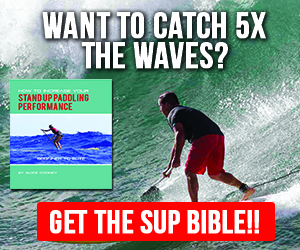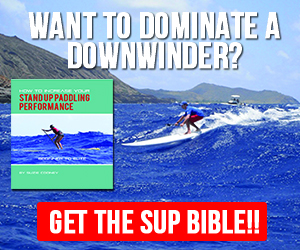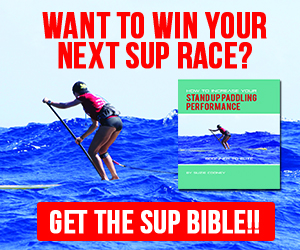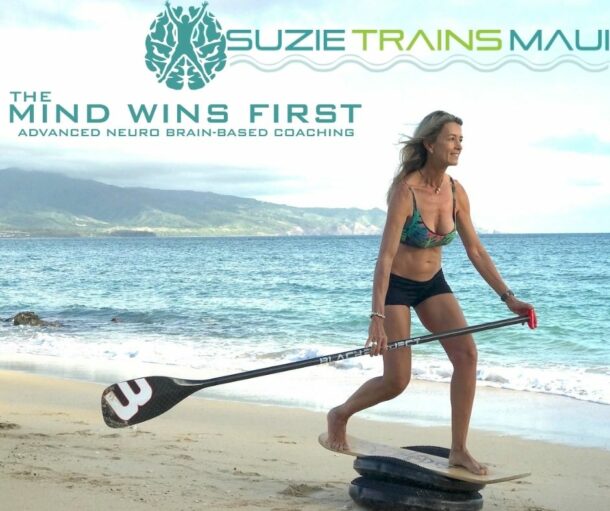Downwind Stand Up Paddling Requires A Big Heart
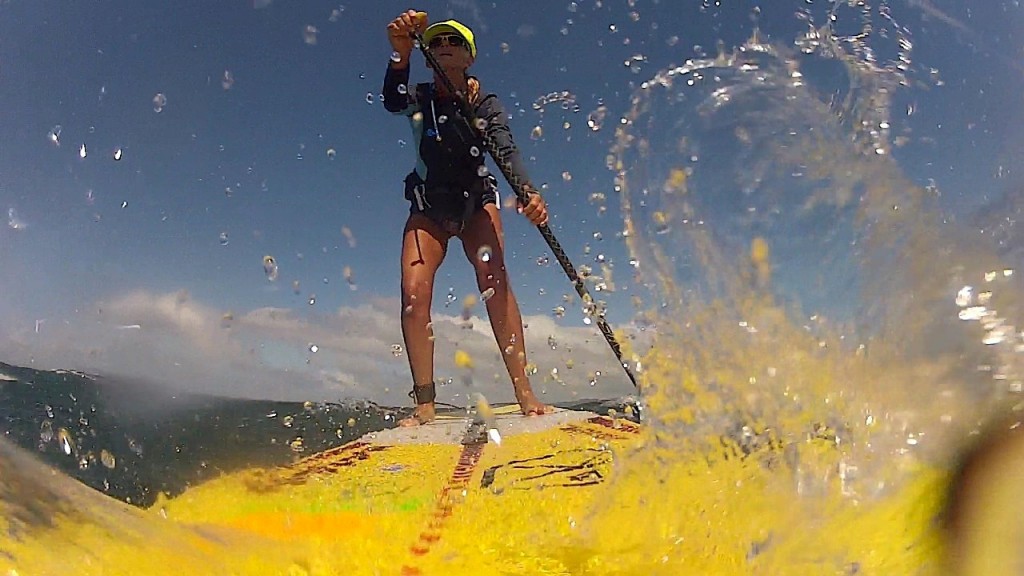
GoPro
Aloha and welcome to the world of downwind stand up paddling. I know you are hooked on this insanely fun, adrenaline elevator element of SUP; if you are reading this article. I’ve written about this a little before some time ago, but thought I’d bring it back again in greater detail as we approach this downwind season.
In this post I’ll touch upon the importance of increasing your lung capacity to increase your endurance and paddling capacity specifically for downwind paddling. I will also give you some cardio training tips, exercises and a special workout to help you structure your water time and gym time, so you can go the distance, get better results and have more fun.
Note: This will not be an intensely geeky, cardio technical wordy article as it could be, (no offense to those who love that) because my message here is for you to be much more aware of your cardio capacity or lack of, relating to downwind stand up paddling skills. I do refer to heart rate monitor, AT, recovery but I didn’t want to scare you away.
Maximum Heart = Maximum Glides = Maximum Fun!
Like many of us who live on or frequent Maui, we know for a fact we are some of the most spoiled paddlers in the world. We have on our N. shore a conveyer belt of downwind action, called Maliko. Flat-water padding? What? “We don’t do that” is what I often hear. Those words, “flat-water” I’ll admit, I too am guilty of never wanting to enter flat-water paddle races because I’m sure I’d suck wind. Honestly, I’d just rather surf it.
Besides Maui, paddlers are discovering other amazing places to downwind paddle like Lake Bohinj in Slovenia, or I know my Aussie friends love Snapper Rocks to Currumbin Alley and Broken Head to Ballina, or the Northern waters of Seattle, and on down to the Gorge in Hood River, Oregon.
Downwind stand up paddling has become it’s own unique element of the sport that offers fun and racing, allowing the adrenaline junkies like myself and those who love the surf; to have an “all in one” adventure. It simply doesn’t get any better.
Some surfing experience does help and will allow you to save your energy and cardio capacity for faster paddling. So if downwind paddling in high winds is your goal or dream and you want to be better at it, learn some footwork and go surfing.
The coolest thing about catching a bump or glide is that you just go. For example, once you catch a bump or glide which can require you to spend quick, intense bouts of cardio to paddle like hell to catch it, then you step back as your nose enters the trough and enjoy the scenery. But it doesn’t end there nor should your cardio effort.
However, when it comes to downwind paddling or racing, not all waters or racecourses or crossings are the same. You’ll 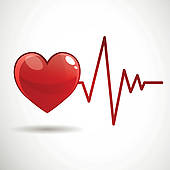 find that not always will the wind cooperate in your favor forcing you to paddle on one side or head on or in many directions; every other direction except at your back. Or the tides can act as a mean backwash that makes you feel like your paddling in mud. That’s when you quickly discover you may need some extra, extra heart, and I don’t mean courage.
find that not always will the wind cooperate in your favor forcing you to paddle on one side or head on or in many directions; every other direction except at your back. Or the tides can act as a mean backwash that makes you feel like your paddling in mud. That’s when you quickly discover you may need some extra, extra heart, and I don’t mean courage.
First, I always tell my clients to train on land and to train on the water; to push to the point where you get uncomfortable and stay there for one more minute, then two, then five and so on. Puking is not the goal, but not puking is. Make sense? Bottom line, the old training saying is true, “you gotta get comfortable being uncomfortable”.
If you’ve never heard of the term bonking, it’s a common term used in the endurance athlete world, which simply means hitting the wall. Your body and everything inside it is done, toast, depleted and it can even happen to the best. It’s not a pretty site.
So real quick, take note: The science or physiological meaning of “hitting the wall” is best described by Wikipedia is:
“In endurance sports such as cycling and running, hitting the wall or the bonk describes a condition caused by the depletion of glycogen stores in the liver and muscles, which manifests itself by sudden fatigue and loss of energy. Milder instances can be remedied by brief rest and the ingestion of food or drinks containing carbohydrates. The condition can usually be avoided by ensuring that glycogen levels are high when the exercise begins, maintaining glucose levels during exercise by eating or drinking carbohydrate-rich substances, or by reducing exercise intensity.”
Let’s now refer to the exiting Maliko gulch, for example. When you first attempt it and paddle out for your first run, “standing” for those who have little to no cardio training, that’s what get’s most right at the start. For the most part your first ten minutes or more (no warm up); you’re paddling up wind and side wind against side current and wind swell just to get out so you can turn down.
Some of you may reach your anaerobic threshold or AT which is NOT how you want to start your downwind run! (refer to definitions at the end of this article )
Granted you’re nervous, your adrenaline is turned on high and you may be tasting your breakfast, but this is the golden moment where your regular cardio training, increased heart and lung capacity will really help you and pay off. My heart rate rises but I’m able to control it as this is a perfect moment to get my head clear and start paying attention to my breath and rhythm as I get ready for the action.
Down we go!
A great tip I got once from Michi Schweiger of Naish one day on a training paddle, is he told me to stroke hard and fast twice then step back two steps and surf. Again, paddle hard twice, step back glide, paddle hard repeat all the way. He is very strong and has great footwork. He also has a fierce mind set with great lung capacity and is well trained. Sometimes I refer to it as the 2 and 2 or 2-3 and 2.
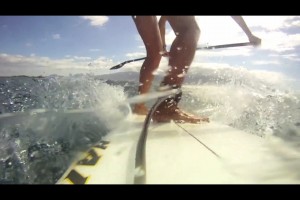
I do this now, but sometimes it’s like 2-3 strokes as I’m looking for the next bump. So let’s break down those first two strokes. They should be very powerful, digging, fast strokes. Anyone knows that paddling with Michi you better keep up because as he always says. “you can do betta” in his deep Austrian accent.
Right here is when you need a big lung capacity check.
First note as your paddling, be mindful of your breath. Is your heart pounding out of your chest wall, do we call 911? Or is it a nice smooth, trained, nicely elevated rhythm? Can you maintain this for 5, 8 or 15 miles?
The second part I think to the 2 and 2 is once you actually step to the back of your board in the surf stance, don’t stop paddling. Keep your blade in the water moving you forward in easy, short stroke. This stroke is not as hard, heart rate smooth and steady. This will actually assist you as you connect to the next bump, unless you get a ridiculous glide and putting your blade in the water slows you down, or the surf is so big you can use your paddle to help brace you.
You’ll find that the moment you exit or come near the end of your first bump or glide as your scanning and hunting to connect to the next; that extra time you spent on your spin bike, or doing interval padding sprints; this extra juice that can transfer to your paddle end will really help!
Now, how is your breath?
Speaking to the cardio aspect of the concept above, if I need a quick rest or a small recovery moment, I’d be so thankful to catch a long glide to pace and stabilize my breathing and heart rate so I can get ready for the next effort. You’ll watch the most experienced paddlers do this, but you can be sure it doesn’t last too long and you should not allow your heart rate to get to that full resting state, ever until the end of the race.
I’ve also noticed that the more I’m aware of my breath and effort the more easily it is for me to keep focused at the task at hand and the goal is to get as many bumps as possible. When I notice my heart rate dropping or if I relax too much, my mind wonders and I look around at the coast too long. All good and nice and part of the experience for sure, but it’s distracting too.
The take away on this here is to keep moving, find a rhythm that you can maintain and sustain to keep your heart rate working at a zone level or percentage of your maximum heart rate ( like 70-75%) that allows for endurance. In doing so, you’ll be able to pull out some turbo reserves to pass someone or get that extra bump or glide. You’ll have more confidence.
I caught up with Manca Notar, Naish Team Rider of Slovenia; and asked her to share her thoughts on this topic. She writes:
“Comparing flat water and downwind racing is a pretty hard work. Despite the fact that we are using more or less the same equipment, there is a big difference between flat water and downwind racing. When you are flat water racing you have to equally dispose your power through the whole race and you also have to have in mind that you need extra power when you want to pass a competitor. You don’t have any chance to rest and let your heart rate drop a little bit. When you are downwinding you might reach your highest heart rate several times (start and finish line excluded), but you also have a chance to let it drop a little bit when you catch a glide.
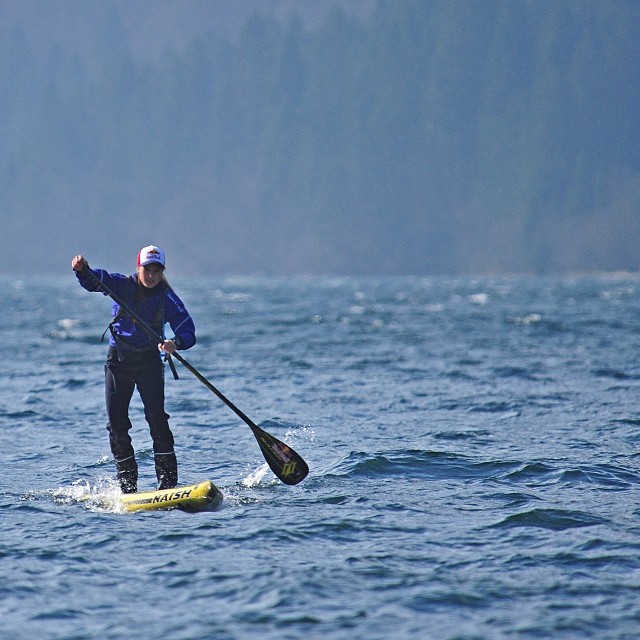
photo: Manca Notar
Additionally at downwinders you are constantly losing your energy to stay in balance, but on the other hand you also have a help of wind, waves and sometimes currents. So, if I compare how many strokes I make to paddle one distance, the number is definitely higher in flat water racing. So, looking at stroke number and calculating the energy needed for the same distance from strokes it is more than evident that you need more energy for flat water racing. But if the paddler has problems with balance and catching glides, then downwinder can be a nightmare and from that point of view downwinders are much, much harder and they are definitely level higher. However for both, flat water racing and downwind racing you have to be physically well prepared and it is more than important to know the response of your body and its limits. It is really important for paddler to train in intervals with heart rate monitor which helps him to watch his progress.”
Mahalo Manca for some terrific and helpful insight. Good luck this year!
As you begin to include more cardio in your training regimen for downwind paddling, your system will adapt over time. Your body, organs and your internal fluid and sugar stabilizing systems will improve overall to help you increase your cardio training load. Once all of this happens, you’ll notice a huge difference in your endurance. Your paddling will improve and so will your recovery.
Tips and Workouts Improve Cardio for Downwind Paddling:
Identify what types of cardio you enjoy (and don’t say none of it) and build your cardio capacity gradually. Because downwind paddling employs short quick strokes and longer strokes at times, embrace interval training. Track your efforts.
For example, I like to ride my spin bike at least 30 minutes, 4-5x a week. This includes interval training within those thirty minutes wearing a heart rate monitor so I can see how hard I’m working. It’s a motivating tool for me. If a great song comes on, I really crank it up to 3rd position on the handlebars and crank hard for 30-45seconds. Never fully recovering, maybe dropping it down to 70% of my max heart rate and then up again after like 4 minutes.
Then one day a week I may walk really fast on my treadmill, but for an hour to build the other side of cardio endurance especially if the weather is bad. On the treadmill I also include lots of visual training of paddling on the water, connecting my glides and having a good heart rhythm. I like to “see” myself paddling hard 2 and 2, catching bumps and setting up for the next. I’ll also change the elevation to allow for harder work.
Since I can’t run on hard pavement anymore, I’ll go to the beach and run on the sand and dunes and think in my mind, each step is each stroke that really puts me in like this focused moment. It’s great.
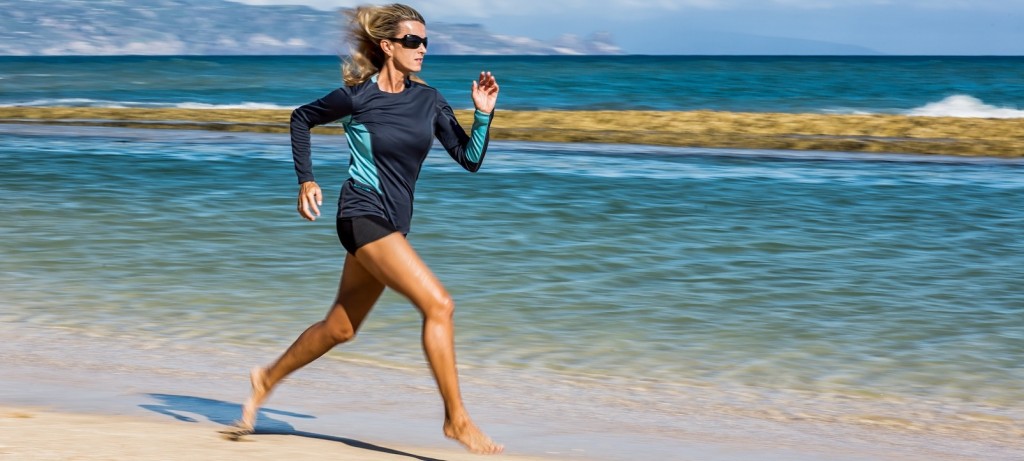
Interval, flat-water paddling: Don’t gasp when you read that word. Before my board hits the water in the harbor, and I see Connor, Bart and Kody doing their usual early more laps, I let that totally inspire me and fire me up. My plan, enjoy getting lapped so I’ll paddle harder!
I note the conditions and scan the water texture. Is there wind, Is there a strong current. Hmmm, makes for a great training session. I actually like paddling into the wind.
I use the water buoys as a marker from point A-B or 1-2 as my timed interval. You can maybe find a dock or boat. Now some distances may be further apart, so be mindful that it’s very difficult to train at a level of your max heart rate, say like at 80-90% for any long period. Hence is why you want to increase you lung capacity to expand and get strong with less and less effort.
Find your breath, your paddling rhythm and then think about your heart rate and how you feel. Can you push to the next buoy with reserve in the tank? You see? That’s how you have to think.
Using a heart rate monitor here to is a useful if you’re wanting to see split times between point to point, or by knowing what zone you’re in can help you push but maintain for the next effort. I like to use it for distance readings too. I use the Garmin 310xt Forerunner.
Cardio Circuits: I found that this form of training REALLY gets your heart rate up. Training note: Any exercise you perform with your hands over your head, increases your cardio effort or aerobic effort. Try it.
When I’m training my SUP clients I try of course to select challenging exercises but ones that won’t absolutely kill them, with an emphasis on exercises that will help specifically, their padding I mix a couple of light-weight strength, coupled with explosive ones using their own body weight with maybe one of those in the prone or with their upper bodies bent over. That position alone causes the heart to work 4x harder. An analogy for instance, running 4 miles is equivalent to swimming 1 mile. You’re in the prone position with water resistance.
Cardio circuits should not last forever but spice up your training so you don’t hit a plateau or get bored, or if you’re short of time. They should be like 4-5 exercises, simple but challenging. You can count reps or time yourself. Count for 25-50 reps or 1 minute for each exercise with no rest in-between.
SUP Downwind Cardio Circuit Sample: Visualize the downwind run that you love and see yourself with a stronger heart.
- TRX Rip Trainer Paddling Sprints ( hop on the Indo Board Gigante Cushion + Pro Kicktail for added challenge, deflate cushion to about 4 inches high. 1 minute fast each side or count to 50-60. Try to focus on breath and obliques as heart rate rises.

2. Get up Get Downs on Bench or Chair with or without weights:
Sit with feet out at 90 degrees, feet straight and shoulder width apart. With no weight, hold your hands above your head. I use 10-12lbs and rest them on my shoulders. I then get up with feet glued to the ground, stand and sit down. All the way down. No cheating. Do this rapid fire. 20-25 is pretty good, or one minute. Helps build cardio and leg endurance. Beginner, no weights, Intermediate, hands above heart, advanced, with weights.

3. Stability Ball Tube Paddle Breaks – 25 reps or 1 minute see my video here:
4. Bent Over 2 Arm Back Rows (prone) Select light weights. I use 8lbs sometimes 10lb dumbbells. Stand with staggered stance, both knees bent. Head in a neutral position and bend over at the hips. Allow your arms to let the weights fall to the ground and with your abs drawn in tight, pull both weights up towards your chest and pinch your shoulder blades as you push your breath out. Do this is a rapid tempo. 25 reps or 1 minute. Note: After completed leave weights on floor, wait for 5-10 seconds, then rise up slowly so the blood that rushed to your heart and brain can re-equalize to a static state.
Do this circuit 1-3 times and good luck! Note, if you’ve just come off the water, and you want to continue training, maybe just do one.
After each cardio session, whether it land or water record your results. Nothing is more motivating for me is to look over past notes to see what I’ve done. List the following: Training and/or Paddling Log:
Date, time of day, rate your energy 1-10 before the workout and type, length of workout. If paddling, write down the wind condition, big surf or small surf, current high or low tide, distance and goal for session. Results to include time, HR or energy expended using a scale of perceived effort 1 being low 10 max.
Terms Referenced in this article:
Heart Rate (HR) The rate with which the heart pumps is referred to as the heart rate.The heart rate of the typical person is roughly 70-80 beats per min (bpm). A very fit person’s heart rate may be 40-60.
Anaerobic Threshold (AT) is the point at which the body can no longer produce enough energy for the muscles with normal oxygen intake. As a result, it begins to produce higher levels of lactic acid than can be removed from the body. So therefore, your main goal is to increase your anaerobic threshold.
Max Heart Rate is the highest heart rate that can be attained by an individual in strenuous activity, varying with fitness and, in adults, inversely with age. A ‘rule-of-thumb’ formula for the predicted maximum is 220 – your age.
Well, I hope you found this article simply riveting, so much so you are hopping up right now to go for an interval paddle on flat water, or maybe exploring a spin class or two.
No matter where you get to downwind paddle, keep your eye on the moving target, the glide! Get to it as fast as you can because you never know if that one is the magic carpet ride you’ve been dreaming about. Your heart strength does matter and it will help you enjoy your downwind paddling even more.
Currently I’m riding the new and amazing Naish Javelin LE 14ft for all of my open ocean paddling and racing. It is incredibly fast and catches tons of glides.
For the best SUP gear on the planet, go to Naish Surfing: https://naishsurfing.com
Aloha and see you on the water!
Suzie Cooney, CPT
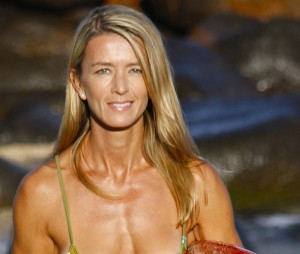
Naish SUP Team Rider
Owner of Suzie Trains Maui, LLC
If you are ever coming to Maui and would like to paddle or train with me you can reach me via https://suzietrainsmaui.com or via this website.
Be sure to like me on Facebook here  https://www.facebook.com/suzietrainsmaui
https://www.facebook.com/suzietrainsmaui

